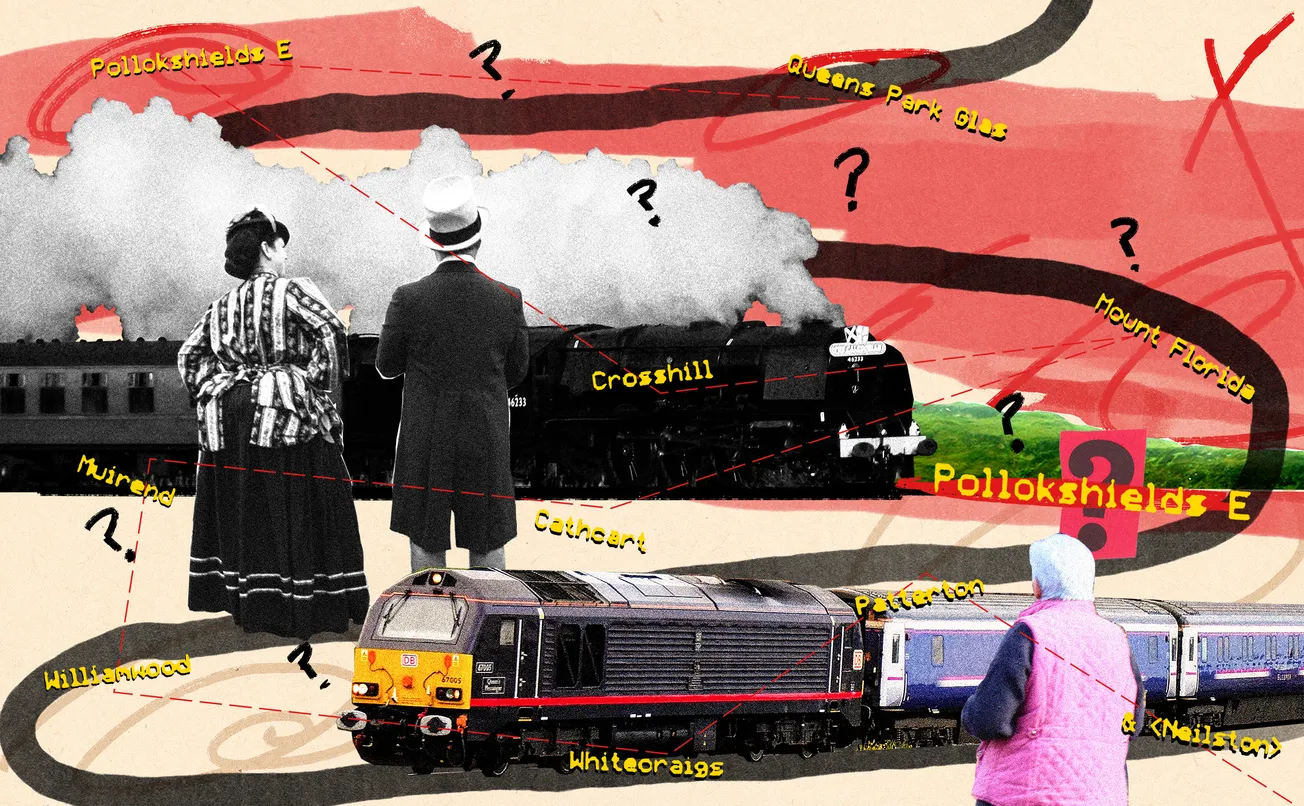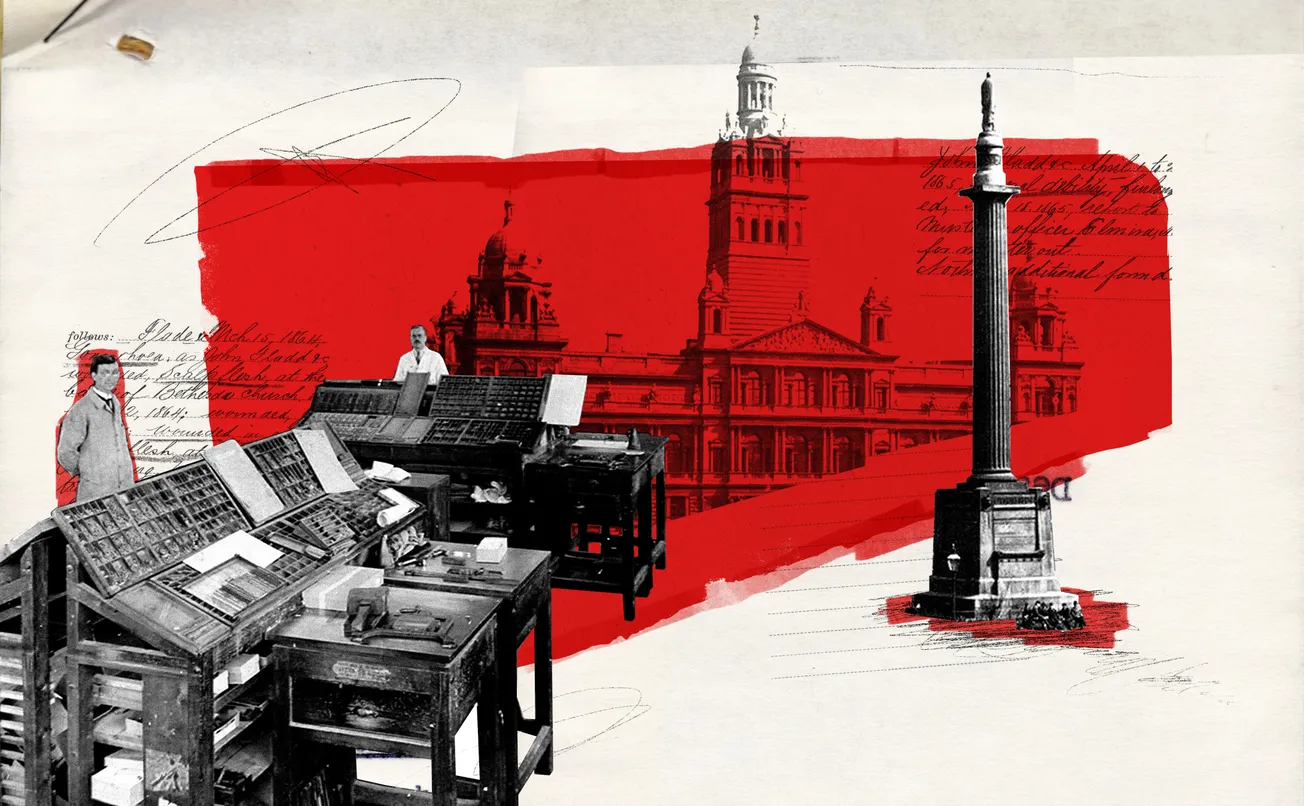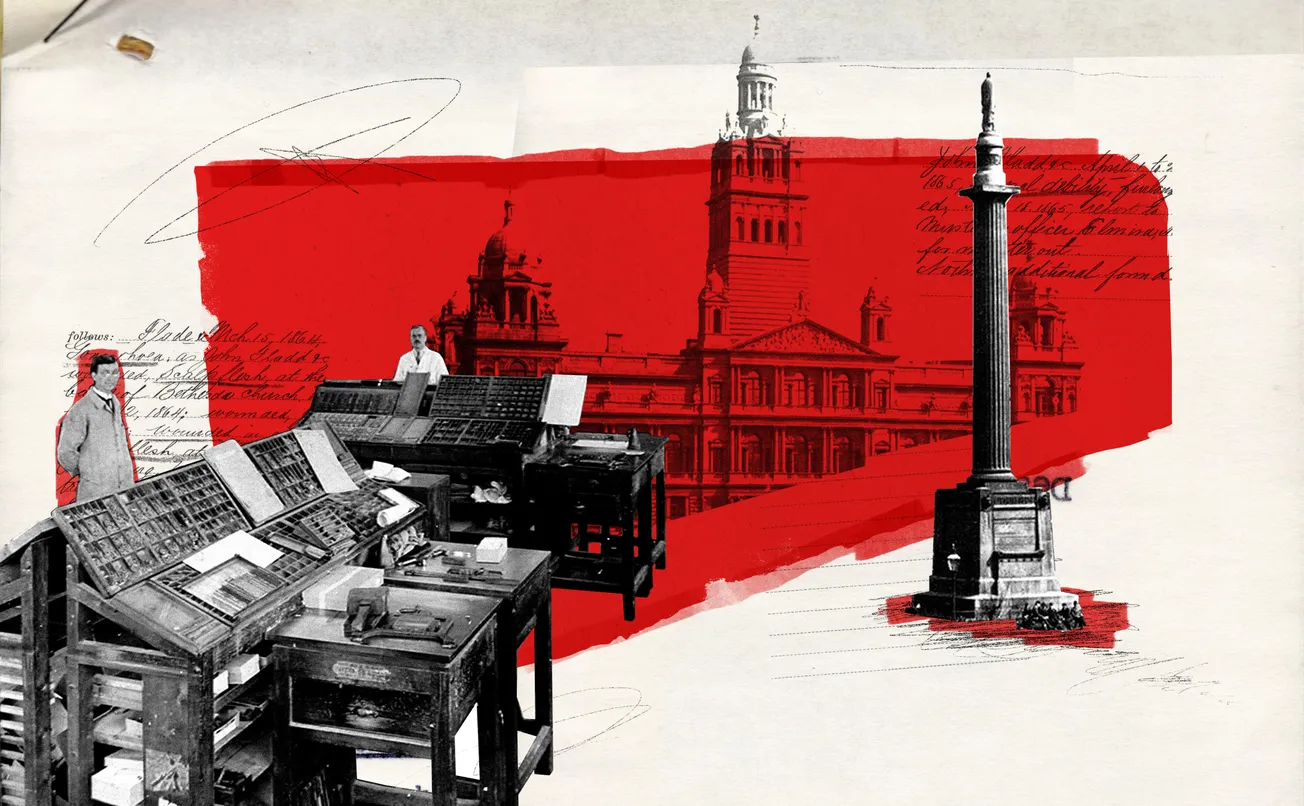Sophie was visiting her cousin’s flat in the Southside for the weekend. They’d got tickets to Chappell Roan’s Scottish debut. They were keen to be near the front early on because they wanted to catch Miss Peaches and the other local drag acts warming up the O2 Academy that night. Also Sophie's cousin is five foot tall.
Sophie, an Edinburgh resident, was wise enough to know to get the Queen Street via Falkirk High train over from Waverley to make up for time lost from coming after work. Then followed the hallowed walk from Queen Street to Central and onwards to her destination. However, she was a stranger to the Cathcart circle line, so when the conductor announced that the next stop was ‘Pollok-something’ East, she panicked. Pollokshaws East, her intended destination, was a few stops and roughly 15 minutes from Central station, her cousin had said. After exiting the train, she realised she’d made a costly error. She was in Pollokshields East.
Sophie had gotten the Polloks wrong.
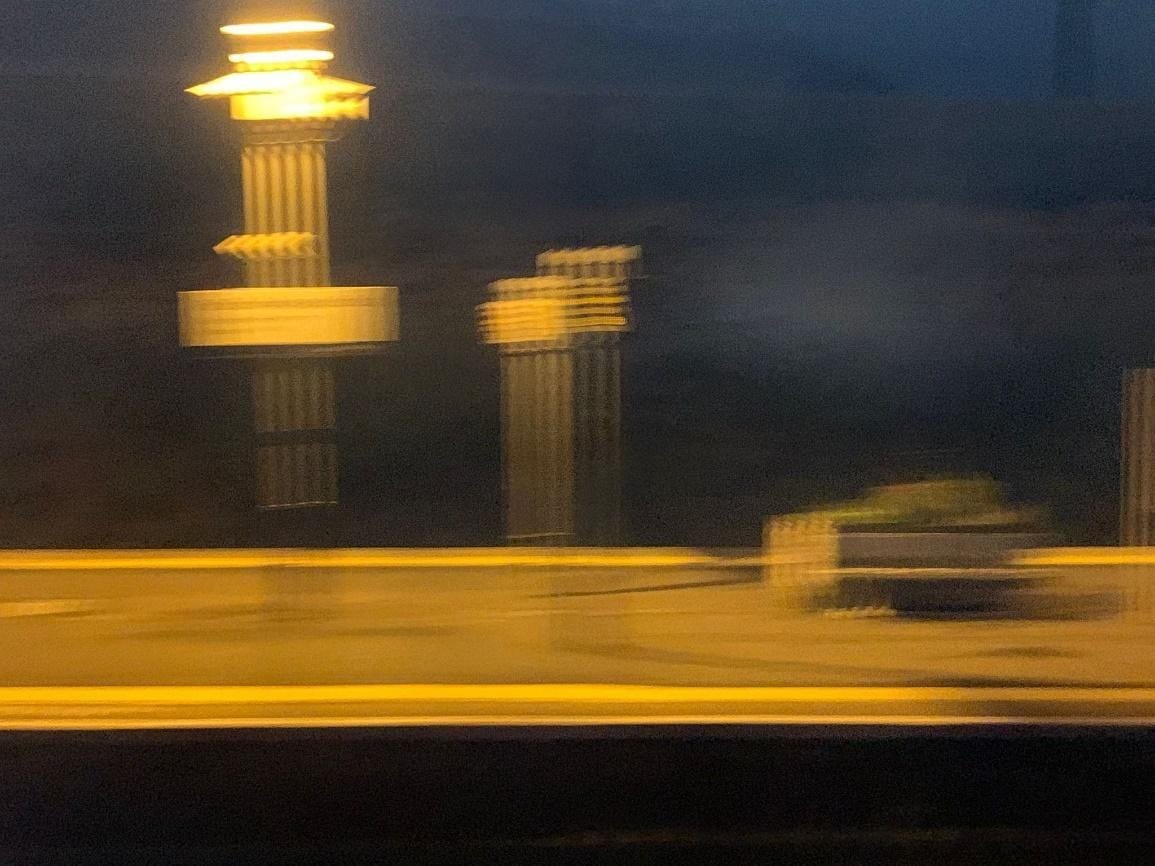
Pollokshields West. Pollokshaws West. Pollokshaws East. Pollokshields East. Four stations, three of which are on the same line. They all sound ridiculously similar and yet are all less than two miles apart.
And yet no one in charge has thought to change this in the 151 years this mistake has been possible. In fact, as we shall see, they have made it worse.
Quickly, before you carry on reading Michael's whistle-stop tour of the Cathcart circle line, let us tell you about The Bell: see it, say it, we'll report it. (Sorry)
We’re Glasgow's new local paper, delivered entirely by email. Sign up to our mailing list and get two totally free editions of The Bell every week: a Monday briefing, full of everything you need to know about what’s going on in the city; and an in-depth weekend piece like this one.
We're on a mission to bring back quality local journalism. To see for yourself, just click the button below and get our unique brand of local journalism straight to your inbox.
Is Sophie's case unique? Absolutely not. She missed the supports and gained sore feet from the 1.6 mile walk to her cousin’s flat by Pollokshaws East, but this story is unremarkable. Just last week, I overheard a man with a pram mix up Pollokshields East with West, costing him an extra 20 minutes on the train with a disgruntled toddler. Three other passengers chimed in with similar anecdotes.
Consider the scale of the problem with some pub math: according to the Office of Rail and Road, over a million passengers passed through one of the four stations last year. Almost 20m passengers have used the stations since 1998, say the stats. If this happened to one in every thousand passengers, last year it would have happened more than a thousand times (and 20,000 times since 1998).
“Everyone from round here has got the stations mixed up,” says famous Pollokshaws native Frankie Boyle. “As you get older, the stations on the board look increasingly similar”, concluded his voicenote to me.
While local Councillor Jon Molyneux has never made a Polloks of it (to coin a phrase) himself, a straw poll he conducted of his Pollokshields constituents was almost unanimously of the view that it would be helpful to change at least one station name. Ask yourself or your Southside friends what events they’ve missed thanks to the Polloks. [Editor’s note: let us know in the comments.]
Sir William Stirling-Maxwell, 9th Baronet of Pollok
So who is responsible for this fiasco? Before we get to the rail stations, the roots of Pollok (Scots Gaelic for ‘pool’), shields, and shaws are important. We need to go back to the Maxwells, specifically Sir John Maxwell, 8th Baronet of Pollok . Today the family are most associated with Pollok House and estate, but in the 19th century the Maxwells (later Stirling-Maxwells) owned an area south of Glasgow’s boundaries (which back then began just past Strathbungo) stretching across most of Renfrewshire.
When he wasn’t sending botanists to Nepal to track down rhododendrons or getting into family disputes about the upkeep of castles, John was looking to transform his agricultural estate into speculative urban development. After the 1833 abolition of slavery, the family received generous compensation for 700 slaves they had owned in Jamaica, which would ultimately fund the development of Pollokshields.
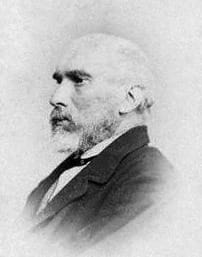
John saw the rolling hills of Shiels Farm and the flat expanse east of Greenbank, both within spitting distance of the docklands at Govan and ‘Trades Town’ (now Tradeston). He knew the well-to-do wanted away from the filthy squalor and unclean air of the inner city. So in 1849, with the architect David Rhind, he proposed a plan where the western hills would become mansions for the wealthy merchant classes. The Shiels’ farmland became Pollokshields and Greenbank appeared on fewer and fewer maps from then onwards.
As far as I can tell, the ‘d’ got added because ‘shields’ is cooler than Shiels. That’s my educated guess at least. Listings for ‘feuing’ or renting plots of land for mansions under this name dot contemporary newspaper notices.
The spread of the name was initially driven by the sale of these plots over the following few decades. Maps and newspapers would exclusively reference Pollokshields East and West. Memory of Shiels Farm grew distant. By the 1880s, Pollokshields West would come to count provosts, writers, and engineers in its residence.
But the issue with all of this was the existing nearby village of Pollok Shaws. The name Pollok Shaws had been adopted in 1812 (‘shaw’ meaning ‘wooded area’). This was a thriving weaving village with an annual ‘races’ so famously raucous that poetry was written about people being mugged there (see Queer Folk O’ The Shaws).
The naming convention isn’t terrible in itself (see the many Cheadles in Cheshire for example). Two mildly similar area names would be broadly fine so long as, say, they were not used as place names for stations on the same railway line.
Enjoying the story? Think others would too? Share the love.
The Cathcart circle and the shipping magnate
Meanwhile, in the tiny village of Crosshill, a wealthy shipping magnate called George Brown began a campaign to have a train line run through the area that would become the suburbs of the Southside. Brown, who made his name in ship owning and brokering, was the leading figure in the Cathcart District Railway. He aimed to link the villages within Pollok’s wider estate to the centre of town. There was money to be made in urbanising these villages, and housing development along the line went hand in hand with development of the railway itself.
The Pollok stations came with the growth of Cathcart District Railway’s circle line. Despite delays by ‘severe weather’ and a very public dispute between the inexperienced construction firm Alex Coghill & Co and the board, Pollokshaws East was constructed in 1886 and Pollokshields East followed in 1894 when the line was made circular. Pollokshaws East was christened ‘East’ due to the existing presence of a Pollokshaws Station (which is now called Pollokshaws West).
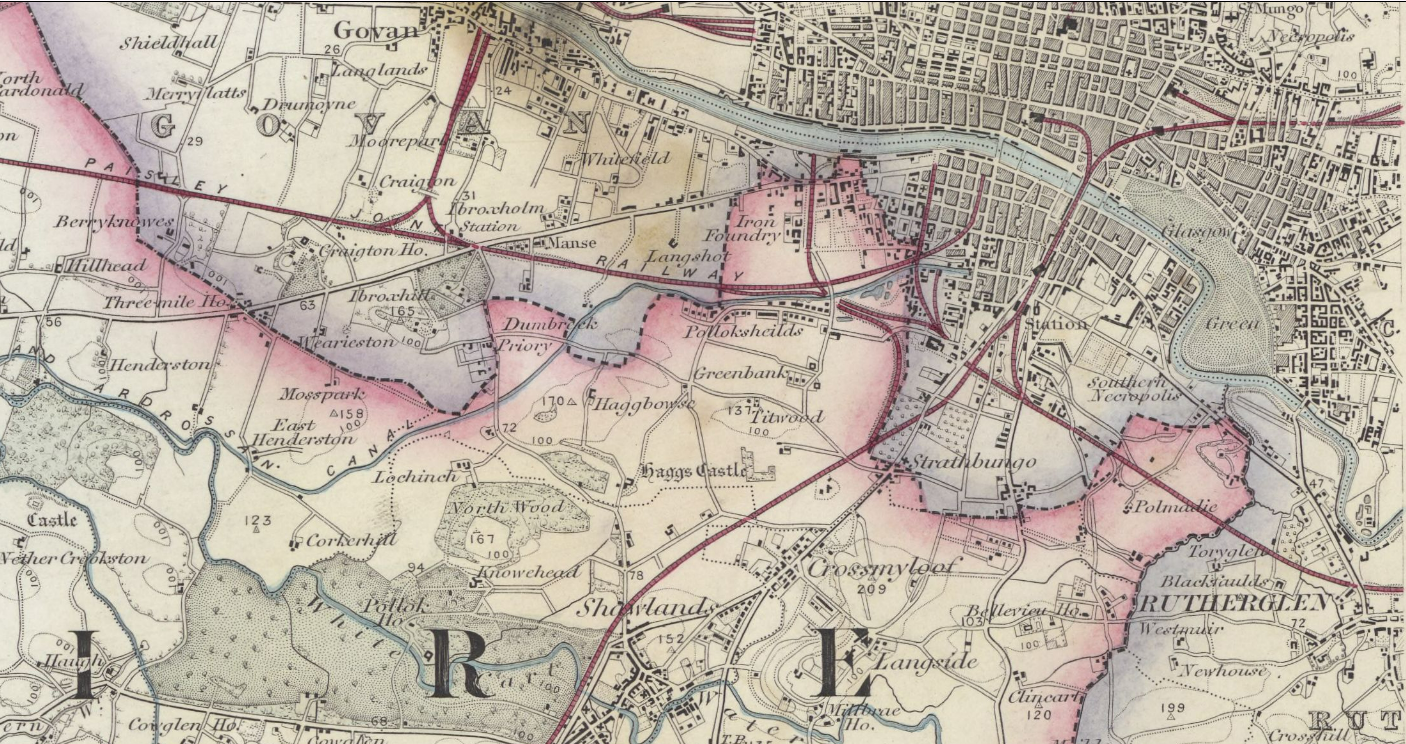
There was no consultation process for naming stations in the modern sense. Despite Cathcart District Railway’s board minutes being public, it is hard to see the logic of their naming decisions. The earliest mention of the stations proposed that I could find was in a half-yearly general meeting minute in October 1887:
“Allusion was made…to approaching extension of the line from Cathcart by Langside, Pollokshaws, and the south-west end of Pollokshields to the Caledonian line at Strathbungo.”
From the maps of historic Renfrewshire, it's clear less confusing names could have been chosen. Pollokshields East could have been called Greenbank, Pollokshaws East could have been Shawlands station (our present day Shawlands station would open later). The influence of the Stirling-Maxwells promoting the Shields and the Shaws could have been a factor, but we can never be sure.
Pollokshaws West
By the 1950s, articles refer to those on the Cathcart circle as “industrious commuters of the Shields and the Shaws” with the line being famous for its Polloks. Though initially independent from the city, these settlements were ultimately absorbed into Glasgow District Council by 1912. Being charitable, you can understand that at the time two stations named Pollokshields East and West was not considered the biggest issue in the world. But it’s somewhat less understandable why Pollokshaws was renamed Pollokshaws West in May of 1952.
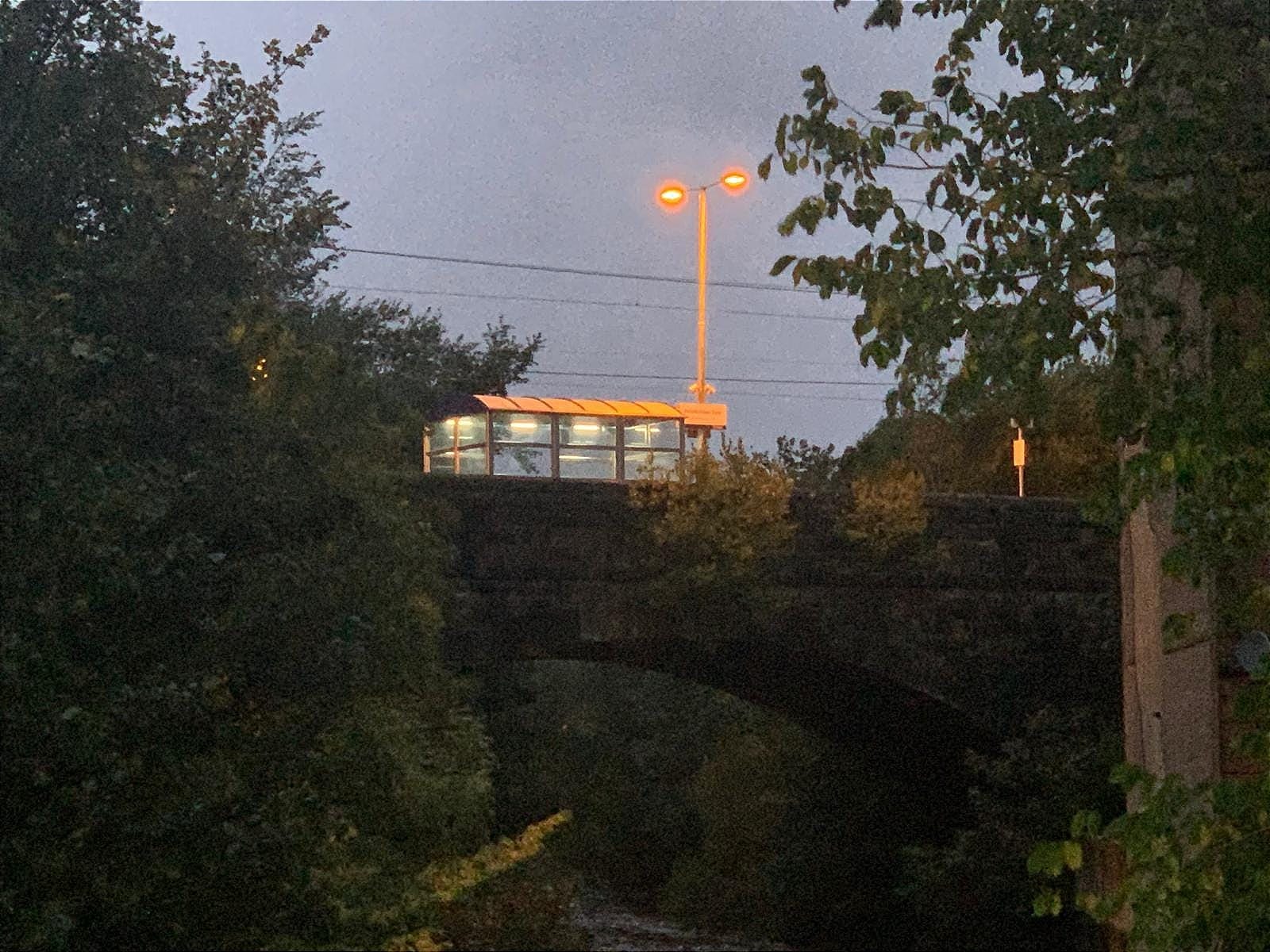
Back to the the present day and the public consultation for the proposed Clyde Metro is underway. It will largely be discussing potential new routes for light rail transit (LRT) and the feasibility of a second underground line in Glasgow. There are however no plans to rename any existing stations.
Councillor Sean Ferguson cautioned that “the financial implications may outweigh the benefits of addressing what seems to me to be a relatively minor inconvenience”. This is a fair concern: a spokesperson for Network Rail Scotland said that the cost of changing a station name “can be six figures”. One name change for a station in London may have cost as much £4m factoring in overnight signage changes, new voiceovers, redesigns of travel maps and new leaflets. Slowly rolling out a name change as timetables reach their natural expiry might offer a cost efficient approach.
Network Rail says they are open to suggestions but that "changing names can be complex and costly, with resources usually better focused on improving infrastructure for passengers”.
But what if we consider the cost of not doing this. Remember Sophie? She estimates that it would cost her roughly £50 (transport, drinks, entry fee) to see one of the four drag acts she missed at Chappell Roan. £4 million covers that cost for all 20,000 Polloks mistakers since 1998 seeing all those acts. Not so expensive now, is it?
Quick reminder: you can sign up to The Bell entirely for free.
Just click the button below, pop in your email address and you'll get two free editions every week that'll keep you up to date about Glasgow's goings on and show you a side to the city you haven't seen before. Enjoy!
Getting back on track
So, I implore some brave souls to raise the alarm on the actual biggest infrastructure gripe for Southsiders. No, not the lack of direct routes to Paisley or the West End, or the terrible wheelchair accessibility to our stations. It's renaming the Shields and the Shaws. Pollokshaws West would arguably be “the priority as it is on a completely different line to the other three,” said Cllr Jon Molyneux. “And this would have to be consulted on with neurodivergent and disabled people” to ensure the problem is not made worse.
Back in December 2018, Rail Forum user Altnabreac suggested renaming the stations as follows: Pollokshaws West to Pollok Park; Pollokshaws East to Newlandsfield (because Shawlands is taken); Pollokshields West to Strathbungo; and Pollokshields East to Tramway. Having searched through the historic record of the last 151 years, I’ve not come across a better suggestion. Although Pollokshields East could just become Pollokshields. We can keep one.
So next time you miss out on seeing your favourite local drag act, remember that part of the reason is the hubris of a shipping magnate, the expansionist dreams of a Baronet landowner — and possibly also because you need new glasses.
*An earlier version incorrectly stated that it was Sir William Stirling Maxwell, the 10th baronet of Pollok, who commissioned Edinburgh Architect David Rhind to set out Pollokshields in 1849, rather than Sir John Maxwell, the 8th Baronet.
If someone forwarded you this newsletter, click here to sign up to get quality local journalism in your inbox.
If you’d like to sponsor editions of The Bell and reach over 11,000 readers, you can get in touch or visit our advertising page below.
Comments
How to comment:
If you are already a member,
click here to sign in
and leave a comment.
If you aren't a member,
sign up here
to be able to leave a comment.
To add your photo, click here to create a profile on Gravatar.

